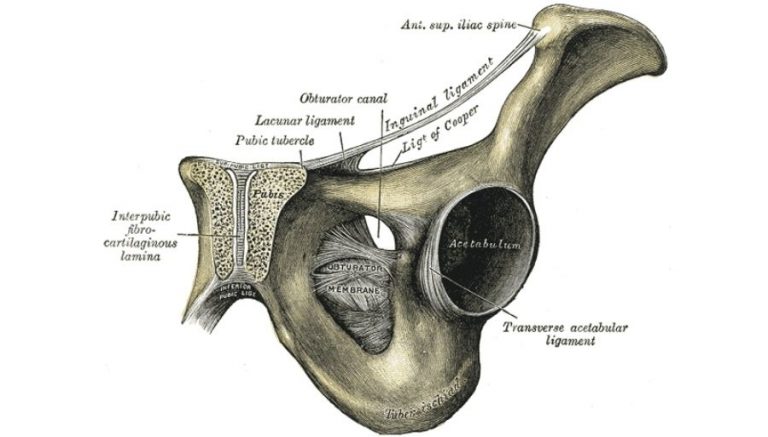Hemiplegia – Definition, Classifications, Causes & Symptoms
Hemiplegia refers to either left or right side paralyses (or abnormal movements) of the body. There are four types of hempilegia and strokes are one of it’s main causes. Difficulty speaking or understanding is one of the first signs when hemiplegia occurs.
What is Hemiplegia?
Hemiplegia refers to paralysis or abnormal movements on one side of a person, either the right or left. The affected side, or hemisphere, can be completely paralyzed or weakened, or it may move in rigid, stiff movements.
Hemiplegia may be characterized by many other problems. For example, the use of one hand may be limited, there may be a problem with balance, speech may be affected or visual field problems may exist.
Classifications
There are different types of Hemiplegia.
- Facial hemiplegia is characterized by paralysis of one particular side of the face.
- Cerebral hemiplegia occurs when a brain lesion disrupts the flow of blood to the brain.
- Spastic hemiplegia is characterized by paralysis along with spastic movements of the affected side.
- Spinal hemiplegia is caused by lesions that have formed on the spine.
Causes of Hemiplegia
- Transient brain ischemia (50% acute infarct) – thrombosis or embolism as below
- Ischemic stroke (80% of strokes)
- Thrombosis (atherosclerosis, dissection, fibromuscular dysplasia, vasoconstriction)
i. Large artery
ii. Small penetrating vessel (lacunar) - Embolism (cardiac or aortic source)
i. Left ventricle/Atrium thrombus/Myxoma
ii. Rheumatic/Prosthetic valve
iii. Atrial fibrillation
iv. Bacterial endocarditis v. Ascending aortic atheromatous disease - Systemic hypoperfusion
i. Cardiac arrest/Arrhythmia
ii. Acute myocardial ischemia
iii. Pericardial tamponade, pulmonary embolus
- Thrombosis (atherosclerosis, dissection, fibromuscular dysplasia, vasoconstriction)
- Hemorrhagic stroke (20% of strokes )
- Intracerebral hemorrhage
i. Hypertension
ii.Trauma
iii. Drugs (amphetamines, cocaine) ivBleeding diathesis, bleeding into tumors - b. Subarachnoid hemorrhage.
i.Arterial aneurysm.
ii.Vascular malformations.
- Intracerebral hemorrhage
- Other causes of hemiplegia
- Ubdural hematoma/Chronic subdural
- Infectious/Inflammatory (e.g., brain abscess, multiple sclerosis)
- Tumors (primary, metastatic, benign)
Signs And Symptoms
The symptoms of hemiplegia depend on the side of which it is affected as a whole are listed below:
- Difficulty speaking and/or or understanding words, which is known as aphasia
- Difficulty swallowing (Dysphagia)
- Difficulty walking
- Problems with balance, known as ataxia Difficulty using arms to dress, feed self, or perform other tasks
- Visual impairments, including blurred vision
- Urinary incontinence, the inability to control urination, or bowel incontinence, the inability to hold stool decreased sensation, numbness, or tingling on affected side of the body
- Memory loss
- Difficulty dealing with frustrations
- Depression.
Hemiparesis vs. Hemiplegia
Hemiplegia is total paralysis of the arm, leg, and trunk on the same side of the body, whereas hemiparesis is weakness on one side of the body. The most common cause is stroke. The paralysis presents as weakness which may be present with abnormal tone (e.g. rigidity or spasticity). In the stance phase, leg instability (i.e. knee buckling or hyperextension) may make walking unsafe, energy inefficient, and/or painful. During swing phase inadequate limb clearance, sensory deficits, impaired balance, and/or pain may contribute to loss of balance, falls, and increased anxiety associated with walking. There is a loss of motor control that prevents the patient from precisely controlling the timing and intensity of muscle action. The ability to compensate for this lack of control is best in hemiplegia compared to other central neurological lesions because one side of the body is entirely intact. The phases of the gait cycle are altered dramatically in hemiplegia. Spasticity and/or weakness are the root causes of limb deformity that interfere with walking in hemiparesis.
In spastic hemiparesis the leg is swung in a semi-circle from the hip with the pelvis tilted upward and the hip abducted. The knee may hyperextend due to inappropriate quadriceps activity. This stiff knee gait inhibits limb advancement and deprives the patient of shock-absorbing knee flexion during weight acceptance. The ankle excessively plantar flexes and may invert (equinovarus). The arm may be held flexed and adducted with minimal swing. In milder cases, some patients may only lose the arm swing and the foot may scrape the floor.
Equinovarus (inversion) is the most common pathologic lower limb posture in hemi paretic patients. Contact with the ground occurs with the forefoot first and weight is placed mostly on the lateral border of the foot, often with toe flexion. During the swing phase, the plantar flexion and inversion of the foot is continued resulting in problematic toe clearance
If spasticity is not present, there is excess hip and knee flexion during mid swing in order to ensure foot clearance. The terminal swing and loading response phases are lost because the flexor activity during limb advancement changes to excess extensor activity during weight acceptance. There is premature relaxation of tibialis anterior as well as premature activation of soleus. The result is a gait that is similar to marching on tip-toes on the effected side.The overall results of the compensatory movements generated by the hemiparetic patient include a decrease in walking velocity with a shorter duration of stance phase, decreased weight bearing, and increased swing time for the affected leg. The unaffected leg has an increased stance time and decreased step length.
Drop foot may be the only indication of a mildly hemiplegic stroke patient. The cause is impaired selective control of ankle dorsiflexors which results in excessive plantar flexion with an otherwise normal gait. Mid swing is the phase where the abnormality is most apparent. The excessively plantar flexed ankle causes a toe drag or the patient compensates by increasing flexion at the hip and knee
Compensatory movements used by hemiplegic patients during walking produce abnormal displacement of the center of gravity, resulting in increased energy expenditure. The oxygen consumption of hemiplegic patients at various walking speeds was found to be 64% higher than in normal elderly at the same speed. The unassisted comfortable walking speeds of hemiplegic patients were on average 46% slower than normals.
Because of the significant decrease in walking speed of hemiplegic patients, the oxygen consumption rate at comfortable walking speeds is lower than normal despite the inefficiency of the hemiplegic gait pattern. When the hemiplegic patients used metal short leg braces their oxygen consumption dropped to 54% above normal and their walking speed increased to 39% below normal.






